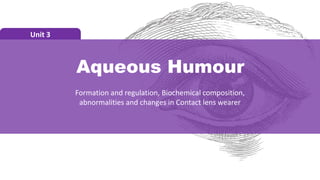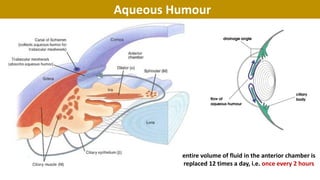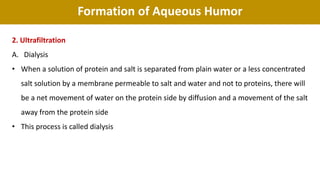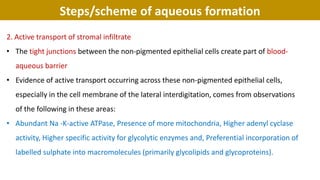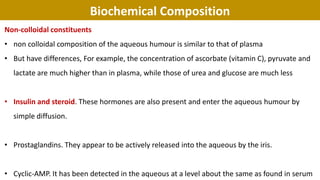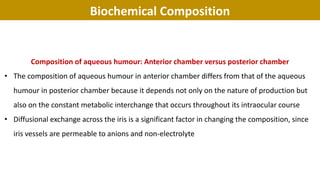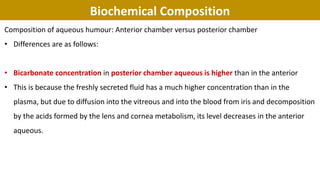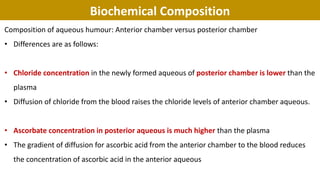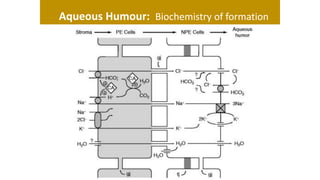The document discusses the formation and regulation of aqueous humour in the eye, detailing the mechanisms of its production, which include diffusion, ultrafiltration, and active secretion. It emphasizes the biochemical composition of aqueous humour, noting significant differences between its anterior and posterior chambers and highlighting key functions such as maintaining intraocular pressure and providing metabolic substrates. Additionally, the paper outlines the role of various substances, including electrolytes and growth factors, in the aqueous humour's overall function and health of the eye.
